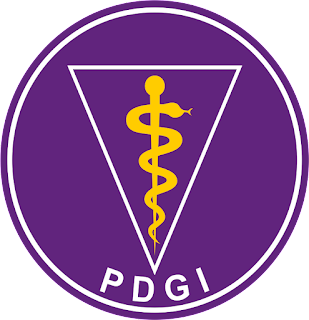Development of Animated Videos Using Diary’s Virtual Reality as a Medium Of Distraction on The Anxiety
Abstract
Method: Experimental design pretest-posttest method with control group design. There were 64 respondents which were divided into; an intervention group given the treatment of watching Diary’s Virtual Reality video and a control group given the treatment of watching video using mobile phones. To assess the child’s level of anxiety when the deciduous tooth is extracted, an MDAS query was used. The test results data of the model were tested using wilcoxon paired test and a Mann-Whitney paired test.
Result: The Expert Validation Test of Dary’s VR media earned an average feasibility score of 97,5% with excellent categories with p-value=0,000. The paired data effectiveness test results showed an intervention group p-value=0,000 and a control group=0,010. The test results of the effectiveness of unpaired variable data show that the p-value between the intervention group and the control group is p=0,000. The Diary’s VR model effectively lowers the anxiety level of child patients.
Conclusion: Giving Intervention Diary’s VR lowers the anxiety level of child patients significantly compared to the control group.
Keywords
Full Text:
PDFReferences
Tanja-Dijkstra K, Pahl S, White MP, et al. Improving Dental Experiences by Using Virtual Reality Distraction: A Simulation Study PLoS One. 2014;9(3). doi:10.1371/journal.pone.0091276 2.
Yahya Brany N, Leman AM HB. Anxiety Overview of Dental Extraction Patients In Dental And Mouth Hospital (Rsgm) Unsrat. Pharmacon. 2016;5(1):39-45. doi:10.35799/pha.5.2016.11222
Mathius NPNE, Sembiring L, Rohinsa M. Dental Anxiety Levels of Children ages 7-12 who will Do Dental Extraction at RSGM Maranatha. Padjadjaran J Dent Res Student February. 2019;3(1):33-42.
Sugiyono S. Quantitative Research Method. Qualitative, And R&D. Alfabeta; 2011.
Notoatmodjo S. Health Research methodology. PT RINEKA CIPTA; 2018.
Gunjal S, Pateel GD, Parkar S. Dental ANxiety among Medical and Paramedical Undergraduate. J Dent. Published online 2017:5. https://doi.org/10.1155/2017/4762576
Shetty V, Suresh LR, Hegde AM. Effect of virtual reality distraction on pain and anxiety during dental treatment in 5 to 8 years old children. J Clin Pediatr Dent. 2019;43(2):97-102. doi:10.17796/1053-4625-43.2.5
Fleet OM, Alshamrani RM, Aljeddawi DH, Bagher SM. Effect of virtual reality distraction on pain and anxiety during infiltration anesthesia in pediatric patients: a randomized clinical trial. BMC Oral Health. 2021;21(1):321. doi:10.1186/s12903-021-01678-x
Arif LS, Gunawan H, Herlambang PM. Opportunity for Applying Virtual Reality Technology in Neurology. J uii. Published online 2019:40-44.
Dahlander A, Soares F, Grindefjord M, Dahllöf G. Factors Associated with Dental Fear and Anxiety in Children Aged 7 to 9 years Dent J. 2019;7(3):1-9. doi:10.3390/dj7030068
DOI: http://dx.doi.org/10.30659/odj.10.1.46-51
Refbacks
- There are currently no refbacks.

This work is licensed under a Lisensi Creative Commons Atribusi-BerbagiSerupa 4.0 Internasional.
Contact us: Odonto Dental Journal: Jl. Raya Kaligawe Km.4, PO BOX 1054/SM Semarang, Central Java, Indonesia, 50112. Email: odontodentaljournal@unissula.ac.id



